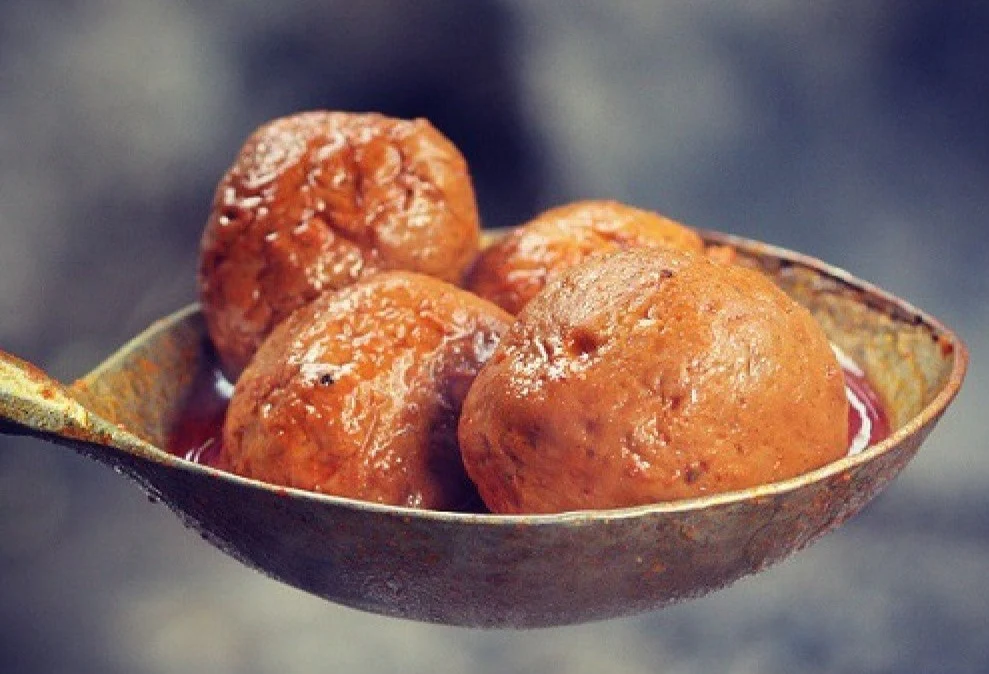Indulge in the winter morning nostalgia that warms the soul. Picture a serene scene: a thick blanket of soft snow draping the landscape, a cozy kanger nestled beneath a pheran, and a tantalizing plate of hareesa, accompanied by lavas and nunchai.
But wait, what exactly is hareesa? Let’s clear the air—it’s not the fiery North African harissa paste, nor is it the hearty Indian subcontinent haleem. Hareesa, or harisse in Kashmiri, is a slow-cooked delight featuring lean lamb meat, either mixed with rice or the thin Kashmiri flatbread lavasaa, delicately infused with select spices. It’s the embodiment of winter morning dreams, a breakfast that fortifies you for the chilliest of days. Despite its unassuming appearance, hareesa is a culinary gem, a source of pure joy.
While this recipe originates from my mum’s kitchen, it’s a universally cherished dish. Here’s what you’ll need:
Ingredients:
- 1 kilogram of lean lamb (preferably leg meat with a bit of bone)
- 2-3 cloves of crushed garlic
- 3-4 thinly sliced shallots
- 2 small Lebanese khobez breads (or 1 cup of cooked rice for a gluten-free option)
- Oil
- Salt
- Whole spices:
- 1-inch piece of cinnamon
- 4-5 pods of green cardamom
- 2 pods of black cardamom
- 2 cloves
- 2 teaspoons of fennel seeds
Method:
- Wash the lamb meat and place it in a deep, thick-bottomed pan. Cover it with water, add garlic, and bring to a boil. Simmer for 1 to 1.5 hours until the meat is tender and falls off the bones.
- Remove the bones from the meat and strain the stock. Return the meat to the pan with the stock.
- Add the whole spices and cook over medium-low heat. Add the bread (previously soaked in water if desired) and bring to a boil. Ensure the bread dissolves into the meat and stock. Season with salt to taste.
- Stir and grind the mixture until it reaches the desired consistency, known as “Gass dyun” in Kashmiri. This may take an hour or two, depending on the meat.
- For the tempering, fry the shallots in oil until almost black. Remove them from the pan and set aside.
- In the same pan, heat a generous amount of oil until almost boiling. Carefully pour the hot oil over the hareesa, ensuring it covers the dish.
- Stir well to incorporate the oil, then fry for a few minutes. Remove from heat and sprinkle the fried shallots on top.
- Traditionally, hareesa is served with fried seekh kebabs, Kashmiri bread, and nun chai.
Immerse yourself in the crackling symphony of flavors as you savor this exquisite dish—a perfect blend of tradition and comfort on a winter morning.
Taste and Benefits of Kashmiri Hareesa
Taste:
Kashmiri Hareesa is a culinary masterpiece that delights the senses with its rich and comforting flavors. This slow-cooked dish features tender lamb meat infused with a subtle blend of aromatic spices. The addition of Kashmiri flatbread or rice lends a unique texture, while the hearty broth envelops the palate with warmth and satisfaction. Each spoonful offers a symphony of savory notes, complemented by the crispy fried shallots that crown the dish. The taste of Kashmiri Hareesa is a celebration of tradition, invoking memories of winter mornings spent in cozy kitchens amidst the snow-covered landscapes of the Kashmir Valley.
Benefits:
Beyond its exquisite taste, Kashmiri Hareesa also boasts several health benefits:
- Nutrient-rich: Packed with protein from lean lamb meat, Kashmiri Hareesa provides essential amino acids necessary for muscle repair and growth.
- Digestive Aid: The gentle spices used in Hareesa, such as garlic and fennel seeds, can aid digestion and soothe the stomach, making it an ideal choice for comforting meals during cold weather.
- Energy Booster: The combination of meat and carbohydrates from the bread or rice provides a sustainable source of energy, perfect for fueling the body on chilly winter mornings.
- Immune Support: The warming spices like cinnamon and cloves used in Hareesa may offer immune-boosting properties, helping to fend off seasonal illnesses during the colder months.
- Comfort Food: Beyond its nutritional benefits, Kashmiri Hareesa offers emotional comfort, evoking feelings of nostalgia and well-being, making it a cherished dish for generations of Kashmiri families.
In summary, Kashmiri Hareesa is not just a culinary delight; it’s a nourishing and soul-warming dish that embodies the rich cultural heritage and flavors of the Kashmir Valley while offering a host of health benefits to those who savor its taste.


